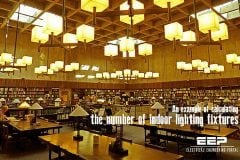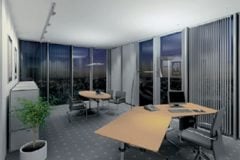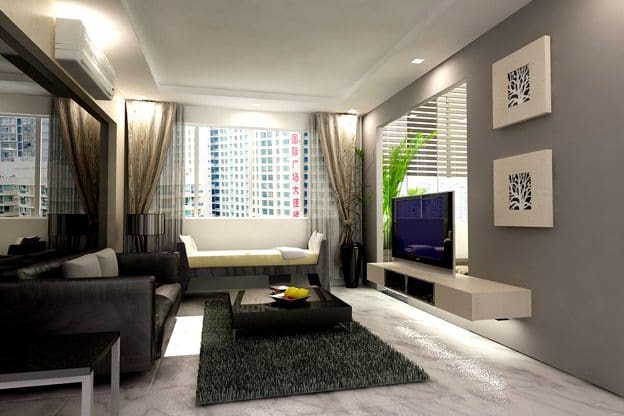
Architectural luminaires are custom-designed and built fixtures that offer features not available in commercial luminaires. They can be built to fit specific locations or perform desired functions as well as provide unusual visual effects. These luminaires can be made from wood, metal, or plastic decorative elements and they can include standard lamp sockets, lampholders, wiring, switches, and miscellaneous fittings.
Examples of these are wall, drapery, and shelf-lighting valences, luminous ceilings, and units that are mounted under cabinets to increase illumination over kitchen or bathroom counters. The simplest, a soffit, can be made from a fluorescent fixture base pan with lampholders and ballast, shielded by a custom-made panel to match the decor.
Soffits
Soffits are architectural luminaires that direct light downward. They wash walls and provide general lighting in rooms with low ceilings. Soffits can be used for direct lighting over a counter or a table in a work area. Recessed soffits can be installed between joists that run parallel to a wall.
Valencis
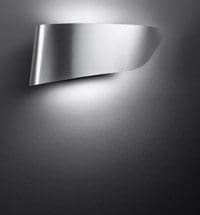
Valences are architectural luminaires that direct light both upward and downward to provide general lighting and wall-washing. The top of a valance can be aligned with the tops of windows and doors.
Coves
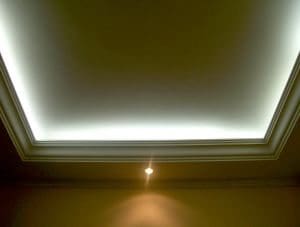
Coves are architectural luminaires that direct light upward. They are recommended for rooms with high or vaulted ceilings and above kitchen cabinets. The top of a cove should be at least 18 in. from the ceiling and its base at least 6 ft 8 in. from the floor.
In kitchens where clearance space between the tops of cabinets and the ceiling is 12 in. or more, coves can be mounted on top of the cabinets.
Baffles and diffusers
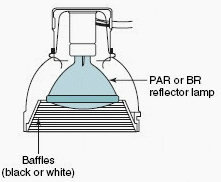
Baffles and diffusers are commercially available elements that can shield bare lamps without blocking all of their light. They should shield lamps from the view of persons standing or sitting in normal positions or standing on landings overlooking the room. Baffles are parallel blades available in different sizes, finishes, heights, and spacing.
Louvres (egg crates)
Louvers or egg crates with typical cell sizes of 1⁄2 x 1⁄2 x 1⁄2 in. deep can be cut to fit from 2-ft x 4-ft sheets. Acrylic and metal louvers are better than those made from polystyrene because the latter yellow with age. Louver finishes are white, silver, and gold.
Array of fluorescent fixture
An array of fluorescent fixture base pans with lampholders and ballasts for either T8 (1-in.-diameter) or T12 (11⁄2-in.-diameter) fluorescent tubes can be fastened to the permanent ceiling in rows or columns to form all or part of a drop ceiling. A matrix of supporting framework can be suspended 1 ft or so below the ceiling.
Translucent plastic diffuser panels can be set in the frames under the lighting fixtures, and commercial ceiling panels can be set in the remaining frames. Separate switches for each row of lamps can provide high and low light settings.
Shields or skirts
Shields or skirts can be made for custom-built luminaires from finished lumber, plywood, or metal. They should be wide enough to mask any bare lamps from the view of persons sitting or standing in the room, as described for baffles or diffusers.
They can be can be fastened directly to ceilings, walls, or the undersides of cabinets with adequate provision for air circulation around the lamps, and they should not interfere when relamping. The shield interiors can be finished with reflective white paint, and their exteriors can be stained, painted, or covered with fabric to match the decor.
Resource: Neoil Sclater, John E. Traister – Handbook of electrical design details



